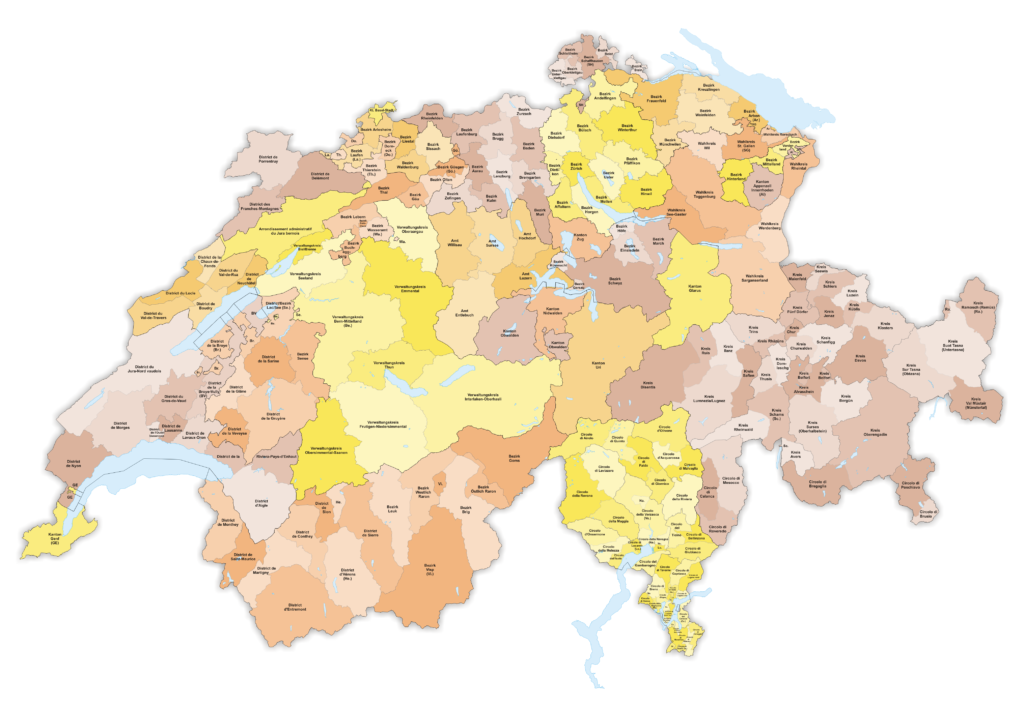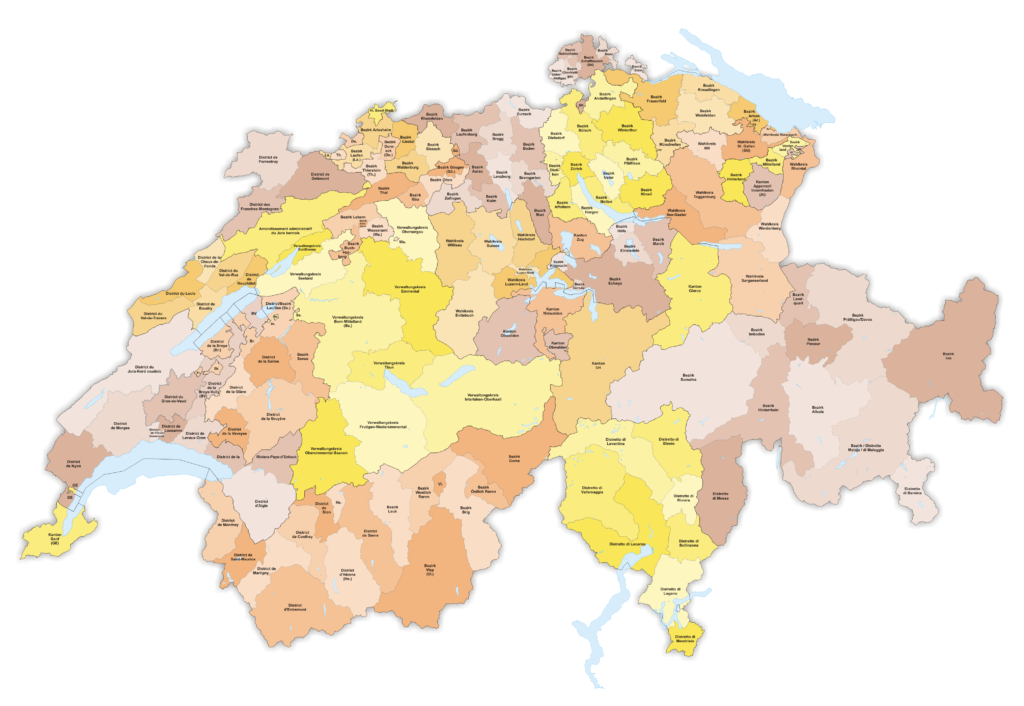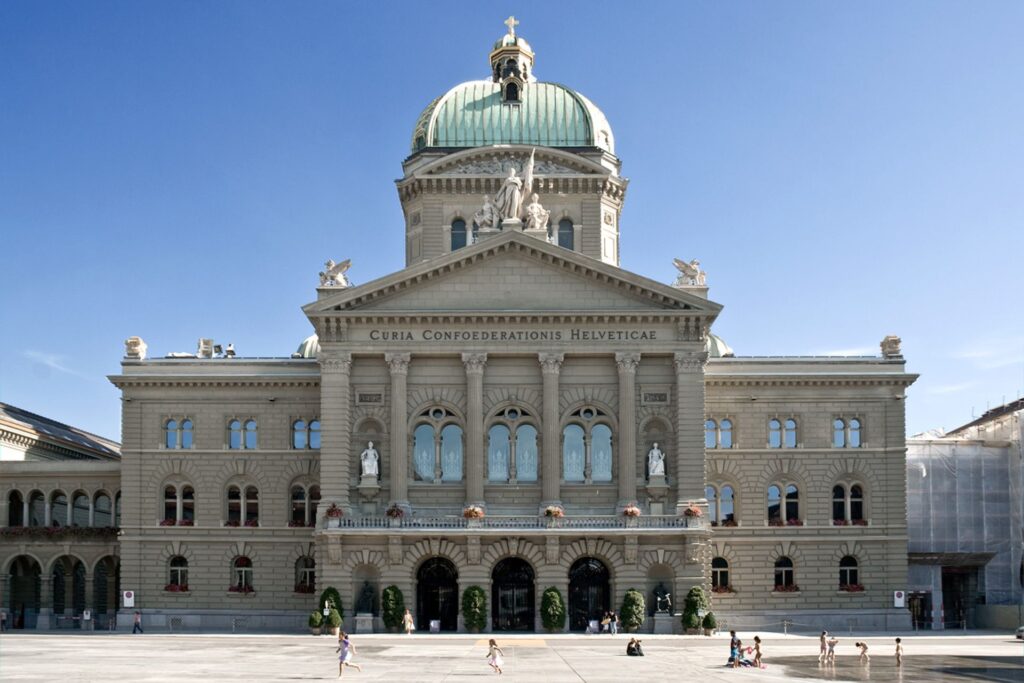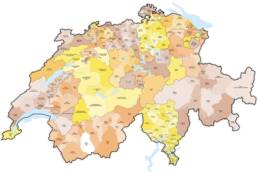The Swiss Districts? Still children of a minor federalism
Neither Cantons nor municipalities, Bezirk or Amtsbezirk in German and District in French do not apply to citizenship and are not compulsory for the Confederation
Unlike centralist states, in the Swiss Confederation the cantons are completely free to decide on their own internal administrative division.
Based on this principle of law and expediency, there are different structures and terminologies for subnational entities intermediate between the cantons and the municipalities, usually called “Districts”.
Territorial public entities in between states and municipalities
In the Swiss cantons, the District (in German Bezirk, Amt or Amtsbezirk; in French District) designates the intermediate body between the State and the municipality and has control and enforcement functions.
With few exceptions, Districts are exclusively administrative and judicial bodies or electoral districts without autonomy: they do not enjoy a legal personality of their own.
Their authorities are integrated into the hierarchy of the institutional system of the Cantons, being explicitly provided for in their respective Constitutions. Not only that: in the Cantons of Graubünden, Thurgau, Ticino and Vaud, they are in turn subdivided into Circles.
In 1798 the Ancien Régime and the… old bailiwicks
In 1798, with the collapse of the political Ancien Régime, the terms which until then had been used to designate the intermediate units of the cantonal administration, both administrative and judicial: the famous Baliages, were abolished in the “old” Switzerland.
Based on the example set by the French Revolution, the Federal Constitution introduced the subdivision of the Helvetic Republic into Cantons and Districts (in German Distrikt).

No “restoration” in the cantons of Vaud, Ticino and Fribourg
After 1803, this name was not superseded at all but retained in the cantons of Vaud, Ticino and Fribourg (in the French-speaking part), while the states of German-speaking Switzerland abandoned this term, which had been imposed on them, and returned to the earlier and more familiar formulations of Amt or Bezirk.
Switzerland and the “fantastic four” of direct democracy
The ethics of competitiveness and the spirit of federalism
Waldstätte and the “forest” cantons at the dawn of Switzerland…
The term Amt, which became widespread in German-speaking Europe from the Middle Ages onwards, referred to the administrative and judicial subdivisions of the landed gentry, and later also of the territorial lordship; in the administrative language of the 16th-18th centuries, Bezirk designated “specific” territorial units, for example, for the collection of tithes (Zehntbezirk) or taxes (Steuerbezirk).
Thus it was that in 1803 Lucerne opted for Amt, Solothurn for Amtei (today Oberamt or Amtei, consisting of two Bezirke), Bern for Amtsbezirk (until 1831 also Oberamt; in the French part of the canton of the Swiss capital the old Bailliage was preserved, from which by analogy the Italian Baliaggio), the cantons of Zurich (in the Restoration period, 1814-1831, Oberamt), Schwyz, Basel, Schaffhausen, St. Gallen (since 2003 replaced by Wahlkreise, i.e. electoral districts), Aargau and Thurgau for Bezirk.
Names predating the French Revolution were reintroduced or respectively maintained, for example in Valais (Decanie or Zenden or Dizains, 1815-1848), in Neuchâtel (Mairie until 1848), in Graubünden (Comun Grande until 1854) and in the French-speaking regions of Canton Bern (Bailliages, 1815-1831).
No intermediate levels in small states
Small states such as Uri, Obwalden, Nidwalden, Glarus, Zug, Basel-Stadt, Appenzell Ausserrhoden and Geneva do not (any longer) have an intermediate administrative level.
The districts of the semicanton of Appenzell Innerrhoden correspond in practice to the municipalities, those of Schwyz are at the same time municipal corporations with their own legal personality and those of Uri and Nidwalden had or have retained a corporate character.
But what is the current distribution of territories and what administrative logic do they respond to? Most cantons are divided into Bezirke (districts in German). They are also called Ämter (Canton Lucerne), Amtsbezirke (Canton Bern), District (in French and Romansh) or Distretti (in Canton Ticino).
Tasks? Administration and organization of justice
The District generally only deals with the administration and organisation of justice, often through the Justice of the Peace. For historical reasons, in Canton Graubünden and Schwyz the Districts also have fiscal and political jurisdiction.
Ten of the 26 Swiss cantons are not divided into Districts: Uri, Obwalden, Nidwalden, Appenzell Ausserrhoden, Glarus, Zug, Basel-Stadt and Geneva for various reasons, whether historical, practical or because of their small size, while St. Gallen and Schaffhausen have more recently changed the number, the territorial partition of their administrative subdivisions and the names of their intermediate bodies.

All territorial divisions from Appenzell to Zurich
The Canton of Aargau is divided into eleven Bezirke, Basel-Landschaft into just five. The canton of Bern was divided into 26 Amtsbezirke until 1 January 2010, after which it was reorganized into five Verwaltungsregionen (administrative regions) and ten Verwaltungskreise (administrative districts).
The Canton of Fribourg is divided into seven Bezirke, while the Jura is divided into three Districts; the Canton of Graubünden consists of 11 Regions, which on January 1, 2016 replaced the old Districts, keeping almost unchanged their number and boundaries, which tend to follow the natural barriers between the Alpine valleys.
The Presidency of the Swiss Confederation from 1848 to the present day
Swiss monuments? A “hidden” treasure to be enhanced…
Athenian democracy? Revive between Glarus and Appenzell…
The Canton of Lucerne is divided into six Wahlkreise, electoral and statistical units that since 2013 have replaced the previous five Ämter (which already in 2007 had in any case lost any administrative value), tracing the boundaries, with some exceptions, the most notable of which was the inclusion of Lucerne in a separate district. Unlike the Ämter, only two Wahlkreise still have their own capital.
Neuchâtel is divided into six Districts, grouped into four Regions; St. Gallen was divided into 14 Bezirke until January 1, 2003, when it was reorganized into eight Wahlkreise (Districts).

The renunciation of Schaffhausen in the far north of the country
The canton of Schaffhausen was divided into six Bezirke until July 1999, whereas now it goes directly from the canton to the municipalities.
The canton of Solothurn is divided into 10 Bezirke, grouped into five electoral districts, called Amteien, but since 2005 these districts have had almost only statistical significance.
The Canton of Schwyz is divided into six Bezirke, three of which (Einsiedeln, Küssnacht and Gersau) comprise a single municipality. The Canton of Ticino is divided into eight Districts, but these are made up of 40 districts.
Thurgau is divided into five Bezirke, which take their names from their respective capitals; the Canton of Valais, where both German and French are spoken, is composed of 14 Bezirke or Districts; the Canton of Vaud is divided into 10 Districts.
Dulcis in fundo, the Canton of Zurich, the most populous of the Swiss Confederation as well as the most internationally known location as a financial center, consists of 12 Bezirke.







